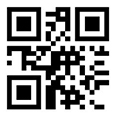
Standards and FAQs for Applying for Musculoskeletal Medicine Accreditation
Standards for Applying for Musculoskeletal Medicine Accreditation
A
1. The applying institution must be a public hospital of Grade II-A or above.
2. The applicant or their team members must hold a Fu's Subcutaneous Needling (FSN) rank certification.
3. The department must have at least two licensed medical professionals who have attended FSN medical training sessions (verified by FSN training certificates).
4. At least one member must have studied FSN for over three years.
Institutions meeting the above criteria may contact Minister Yang Limin for application and review. Contact (WeChat same as phone): 18637276561.
Frequently Asked Questions (FAQs) on Muscle Medicine Department Establishment:
Q
Why establish a Muscle Medicine Department?
A
1. Raises academic awareness of muscle pathologies.
2. Educates patients that muscles can develop diseases and many symptoms stem from muscle issues, promoting daily muscle care for disease prevention.
3. Encourages doctors to recognize muscle pathologies, avoiding misdiagnosis, incorrect prescriptions, and ineffective treatments that delay recovery and waste medical resources.
Q
Under which department should Muscle Medicine fall?
A
Medical staff often focus on which sub-specialty to categorize it under if it’s not listed in medical directories. Suggested departments for application:
- Traditional Chinese Medicine Hospitals: Integrated Chinese-Western Medicine Department, Preventive Treatment Department.
- Western Medicine Hospitals: Rehabilitation Department, Pain Department.
Q
How does Muscle Medicine differ from Rehabilitation and Pain Departments?
A
- **Muscle Medicine**: Guided by muscle theory, it employs FSN and other Chinese-Western methods to treat diseases caused by affected muscles (spontaneous muscle tension), covering internal, surgical, gynecological, and pediatric conditions—not limited to pain-related disorders.
- **Pain Department**: Guided by neurology, it alleviates various pains by blocking nerve conduction.
- **Rehabilitation Department**: Guided by rehabilitation theory, it uses physical therapy, devices, and assistive equipment to treat conditions like paralysis caused by stroke or brain injury.
Q
What clinical issues can Muscle Medicine address that other departments cannot? (Unique advantages)
A
Muscle Medicine has a unique muscle theory and excels in treating conditions other departments struggle with, such as:
- Sudden deafness
- Macular degeneration
- Traumatic femoral head necrosis
- Functional heart disease
- Restless legs syndrome
- Localized numbness, cold sensations
- Unexplained localized edema, etc.
Q
What is the significance of establishing a Muscle Medicine Department?
A
Muscles include skeletal, cardiac, and smooth muscles. The department fills clinical gaps in diagnosing and treating pathologies of these muscles, addressing conditions like soft tissue injuries, functional heart disease, and disorders of smooth muscle-rich organs (respiratory, gastrointestinal, pelvic). These fall under TCM categories like "muscle obstruction," "chest obstruction," "qi rebellion," and "qi imbalance."
It addresses three gaps:
1. **Clinical gap in treating local blood environment disorders**: Improves local ischemia-related conditions like femoral head necrosis, non-healing wounds, and diabetic foot.
2. **Clinical gap in unexplained pain**: Many symptomatic but undiagnosed conditions (e.g., functional abdominal pain, idiopathic edema, unexplained dizziness, cough-variant asthma) may stem from muscle issues.
3. **Clinical gap in muscle-related diseases**: Muscle-specific conditions lack dedicated departments and are often treated in Rehabilitation, Pain, or Orthopedics with suboptimal results.
Q
Suggested Admission Criteria for Muscle Medicine Inpatients:
A
1. Outpatients requiring further diagnosis after three or more treatments with recurrent symptoms.
2. Severe symptoms with limited mobility (e.g., acute lumbar sprain, joint sprain, sports injuries).
3. Acute episodes needing IV therapy or nursing care (e.g., facial paralysis, shingles, asthma attacks, vertigo).
4. Chronic pain or disorders due to poor lifestyle habits (e.g., cervical spondylosis, lumbar disc herniation, constipation, insomnia).
5. Long-term musculoskeletal pain with comorbidities (e.g., severe diabetes, hyperuricemia).
6. Non-local patients with limited access to outpatient care.




